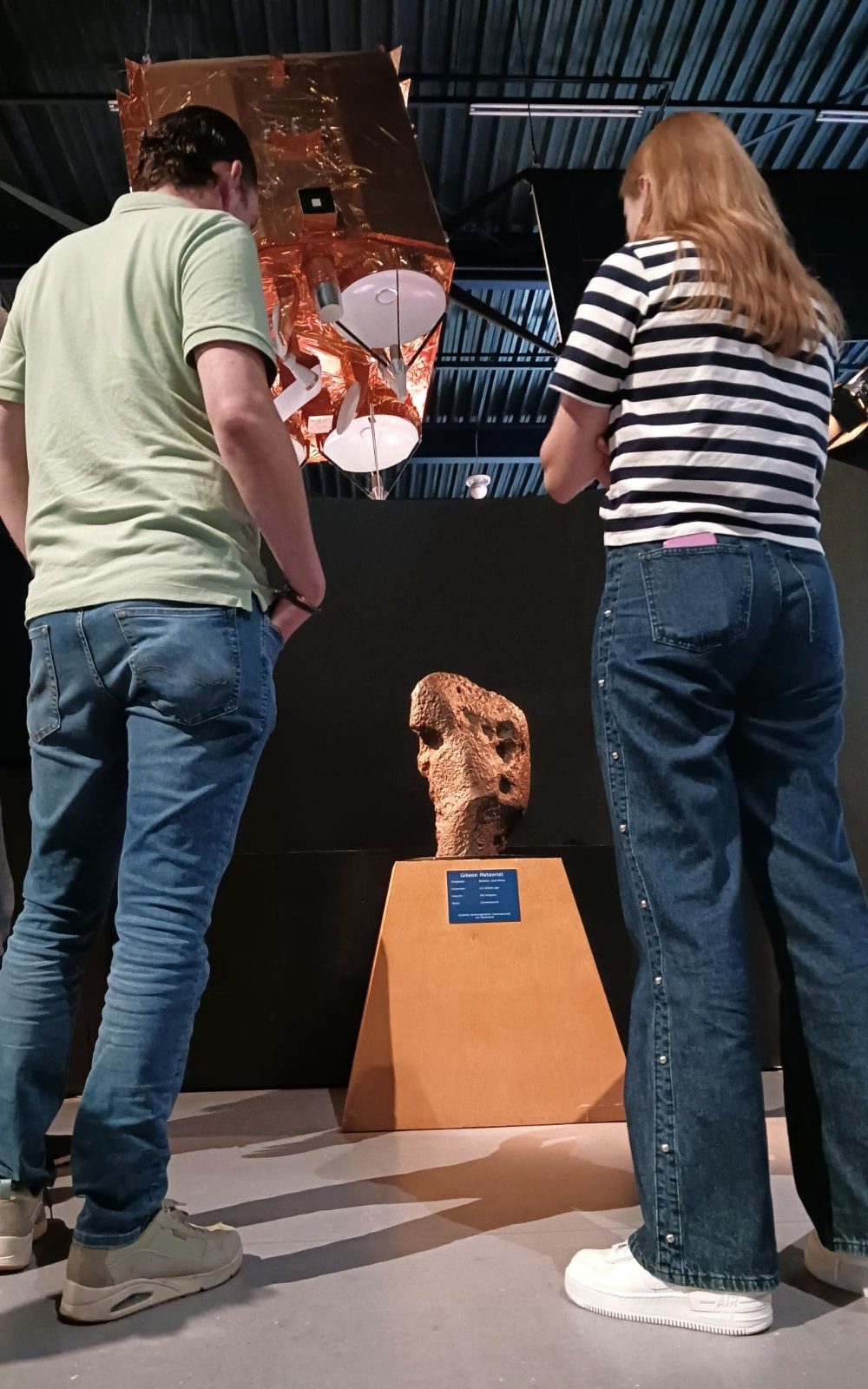
A meteorite that struck Earth at the dawn of civilization is set to sell for up to £850,000.
The space rock landed inwhat is now Namibia10,000 years ago, at the time of the first villages and farmers, and is being auctioned in the Netherlands.
Weighing 240kg, it is thought to be the heaviest meteorite of its kind to ever go to auction.
Bradley Hessink, director of Dutch auctioneers Hessink's, which is handling the sale, said: "This specimen is exceptionally rare. In fact, it is the largest known example of its kind available for private ownership anywhere in the world."
For comparison, the second-largest specimen ever sold was offered in 2021 and weighed 101 kilograms less.

The rock is a Gibeon meteorite which formed at the very start of the solar system around 4.5 billion years ago inside an asteroid that orbited the Sun between Mars and Jupiter.
A collision between two asteroids sent debris flying around the primordial solar system, and a small percentage was sent towards Earth.
This quarter-tonne specimen is thought to be the largest such fragment ever found.
"Such a piece would be a highly significant acquisition for any natural history or space museum," said Mr. Hessink, who is trying to entice the world's richest people to bid on the rock.
It also holds immense appeal for private collectors and enthusiasts of space and the cosmos. Individuals likeElon MuskJeff Bezos, or Richard Branson come to mind.
"Significant interest" expected
The space rock is named after the African village near where it was discovered in the 1800s.
It is known for its Widmanstätten structure, which is a unique pattern that can only form in space as a result of slow cooling over millions of years in a weightless environment.
Rules imposed by Namibia in 2004 would now prevent the meteorite's export, but it came to the Netherlands before the law took effect.
Today it belongs to the Mercurius Observatory in Dordrecht, and Hans Pullen, the Observatory's spokesman, said: "We are now offering the meteorite for auction because we need the revenue for our new planetarium and to update our exhibition spaces."
Therefore, the proceeds will benefit this good cause. Until the auction takes place, the meteorite will be on display at the Space Expo in Noordwijk, allowing the public to view and even touch this special object.
Auctioneers have given an estimate of between €800,000 and €1m (£700,000-£860,000), but this could be an underestimation.
Mr Hessink said he was expecting "significant interest" due to the "exceptional nature" of the object.
He is hoping the lot, which goes under the hammer on August 30, will overshoot its estimate in a similar way to the largest Martian meteorite ever sold in the world, which was auctioned last month.
Recommended
"Incredibly rare" Mars rock sells for £3.2m
Read more
The Telegraph revealed the 25kg piece of the red planet was being auctioned by Sotheby's andIt fetched a fee of £3.2 million.
"Savvy collectors understand that large extraterrestrial specimens of this calibre are vanishingly scarce and have seen significant appreciation in value in recent years," said Mr. Hessink.
Yet beyond the scientific and collecting value, this object also stands as a monumental natural sculpture.
Whether displayed in a grand residence or modern penthouse, it would serve as a one-of-a-kind centrepiece and conversation starter for any guest or visitor.
The only question now is what the final price will be. That's still written in the stars.
Sign up to the Front Page newsletter for free: Your essential guide to the day's agenda from The Telegraph - direct to your inbox seven days a week.
0 comments:
Ikutan Komentar